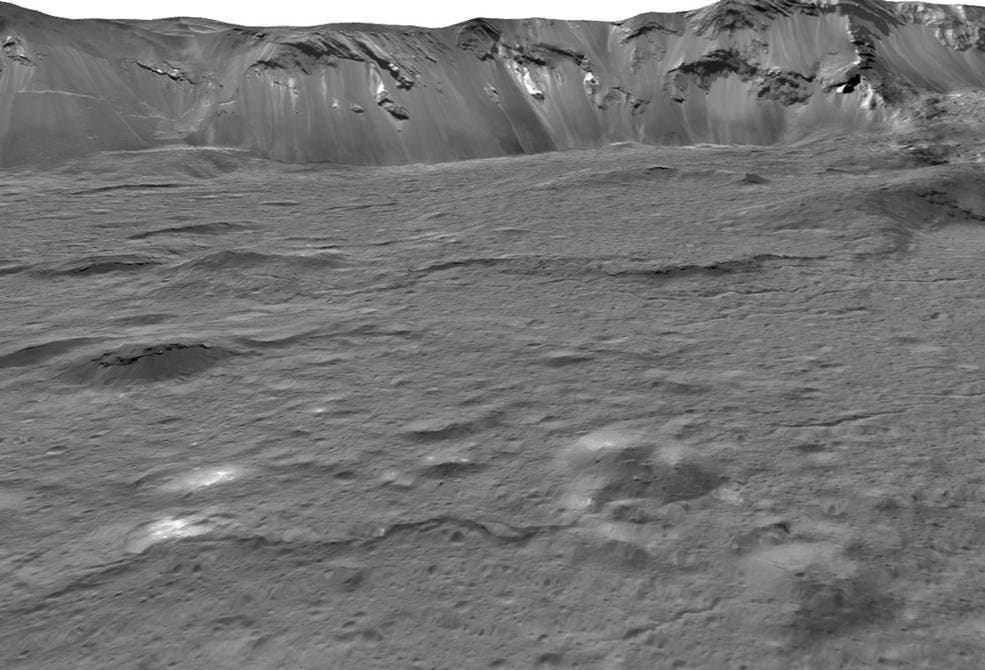Ceres is the largest asteroid in the asteroid belt that lies between Mars and Jupiter. It’s also considered a dwarf planet, much like Pluto. In a flurry of new studies, astronomers report strong evidence of a salty ocean beneath the surface
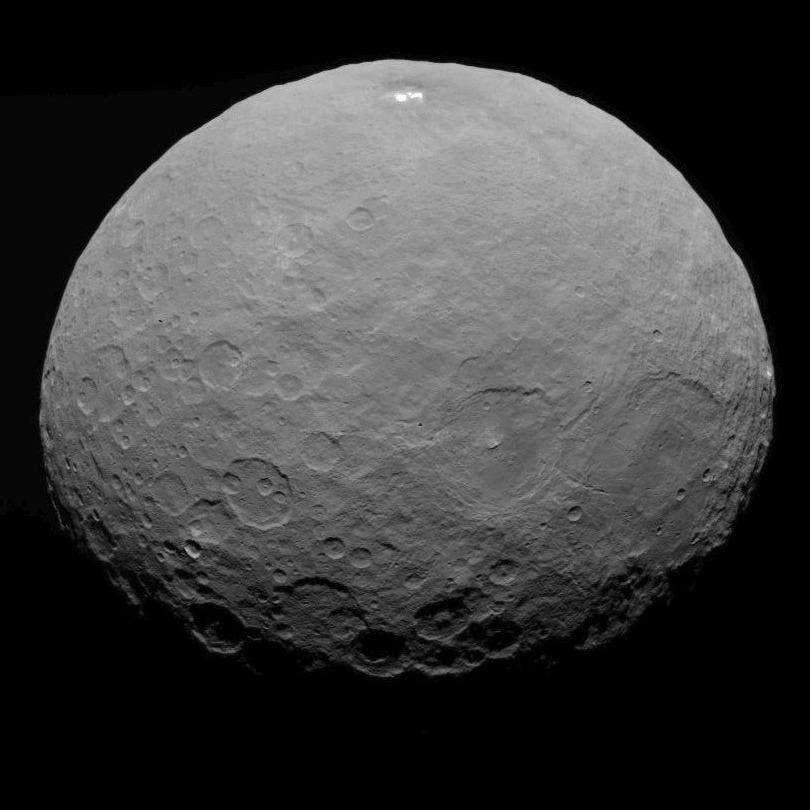
The Dawn spacecraft entered the orbit of Ceres in March 2015, offering an unprecedented close view of a surprisingly dynamic environment. Far from being a cold, barren, and dull planetoid, Ceres is remarkably active.
Researchers now believe its rigid crust harbors a subsurface ocean, an ocean which may have once been on the surface.
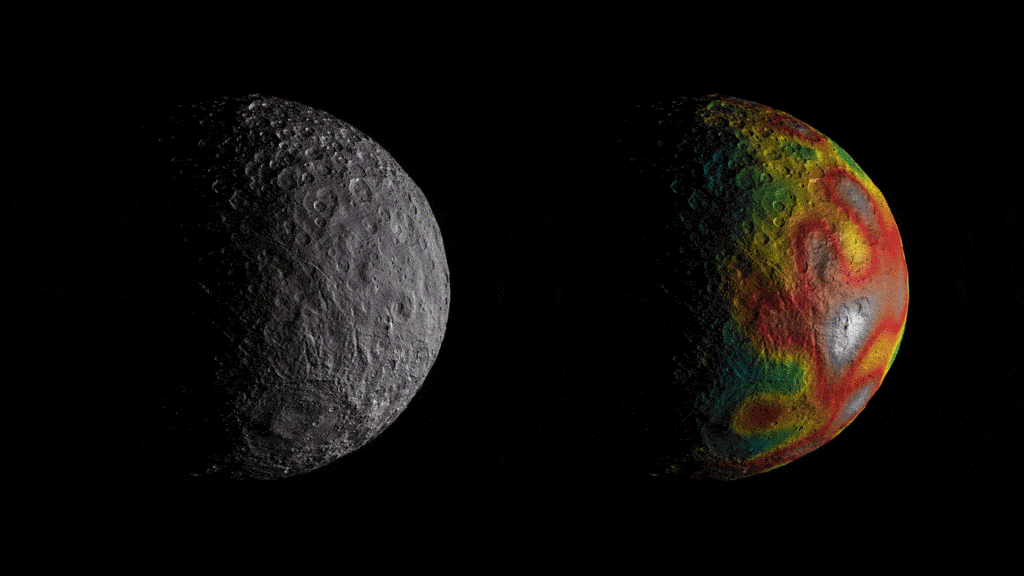
Landing on Ceres would be very challenging logistically and would risk contaminating the planet, so instead, researchers use remote sensing from Dawn’s instruments to measure the Ceresian galaxy, estimating its composition and interior structure, in addition to its topography. Maps such as the one above (right side) help researchers estimate its composition and interior structure.
“Ceres has an abundance of gravity anomalies associated with outstanding geologic features,” says Anton Ermakov, a postdoctoral researcher at JPL.
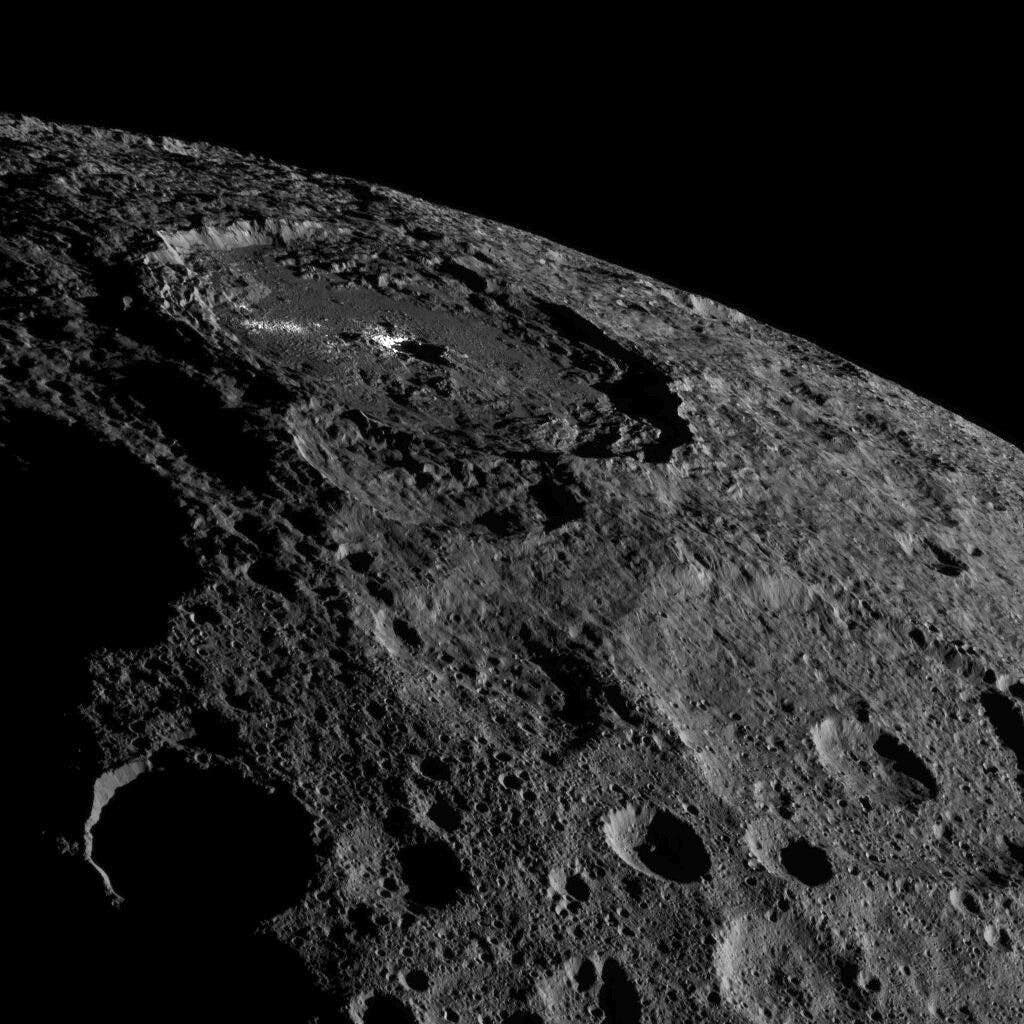
Occator is an impact crater located on Ceres containing the brightest of the bright spots observed by the Dawn spacecraft. Astronomers have found evidence that some of the rocks on Occator are hydrohalite — a type of rock that forms in salt water.
Before this, hydrohalite had only been observed on Earth.
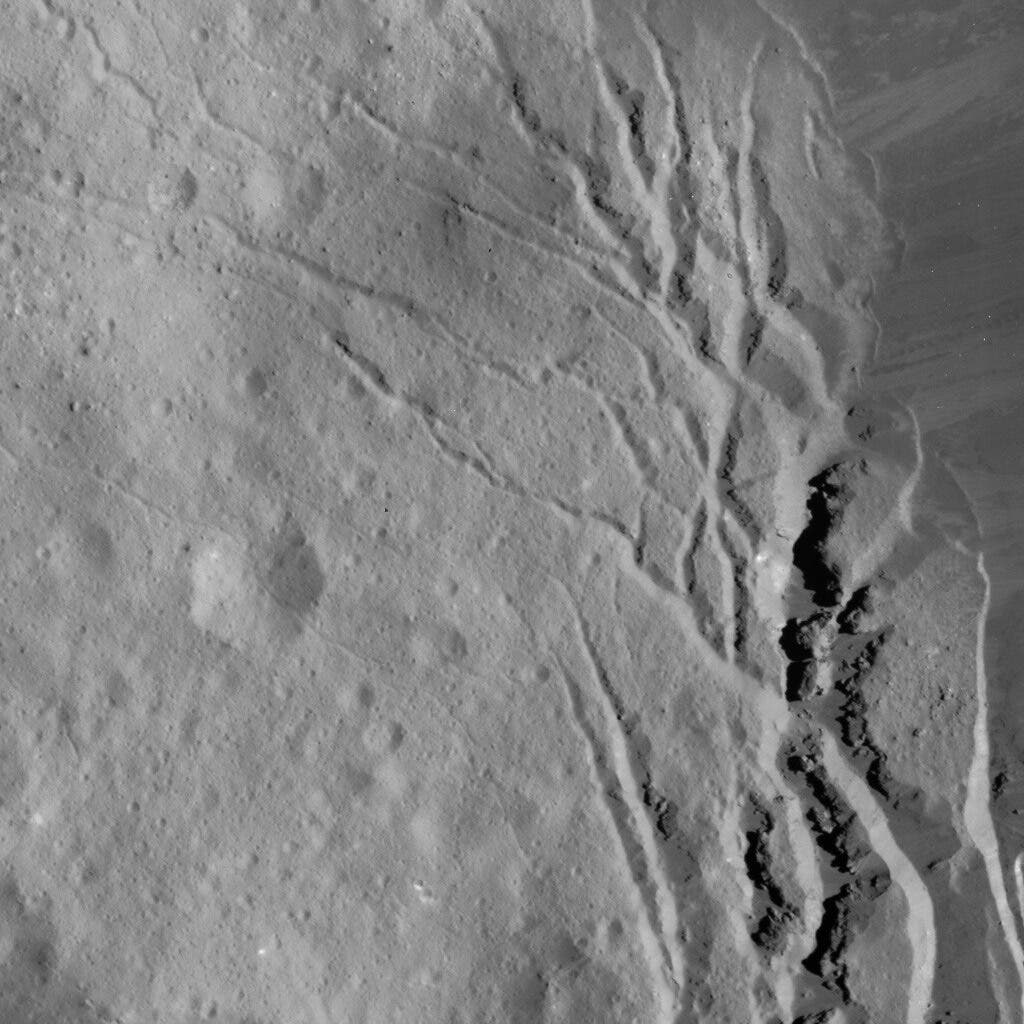
Ceres seems riddled with minerals containing water suggesting that the dwarf planet once had a global ocean. What became of that ocean? Likely, it now only exists underground as a ‘fossil ocean’, recent NASA research indicates.
The Dawn team found that Ceres’ crust is a mixture of ice, salts, and hydrated materials — a type of crust also indicative of a former ocean.
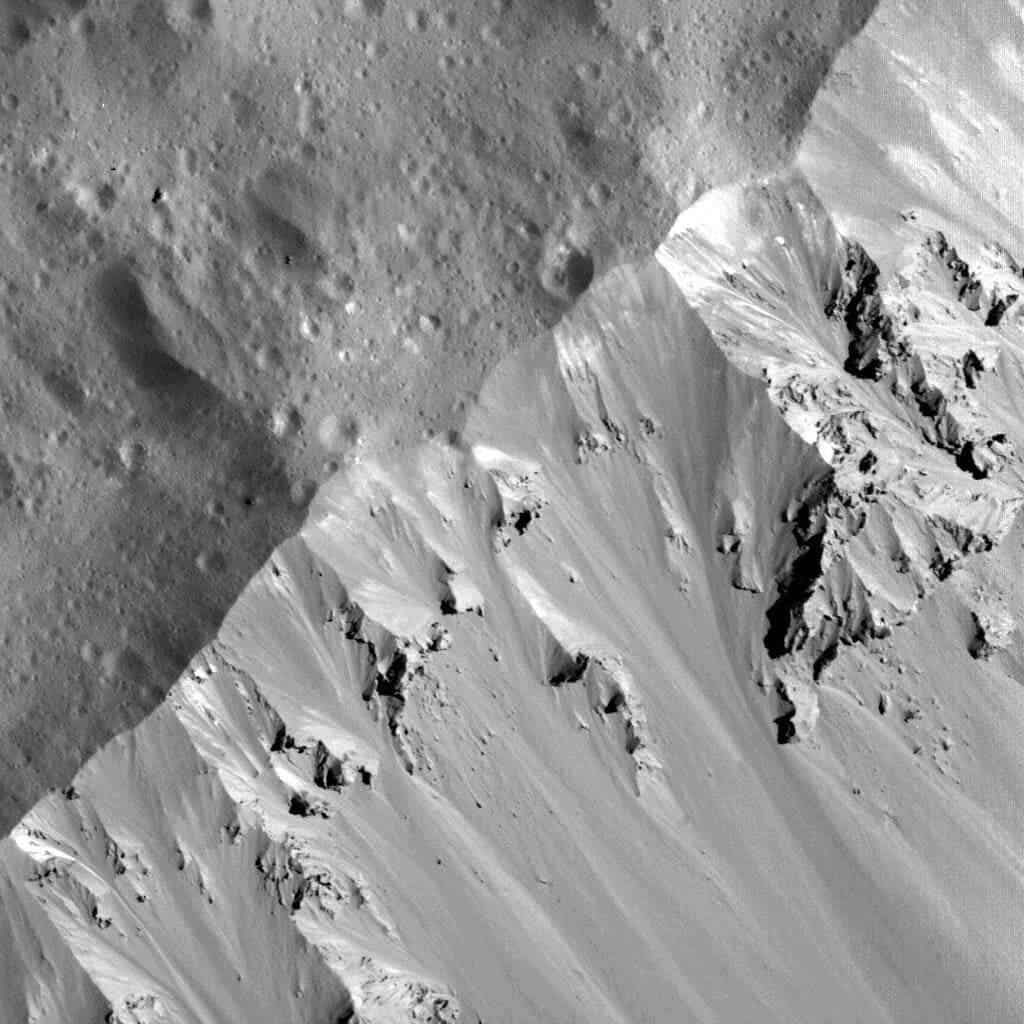
It’s not just Ceres’ past that intrigues astronomers — its present seems quite interesting as well. Ceres is still geologically active in several ways and exhibits signs of cryovolcanism, quite possibly connected to its subsurface water.
The Dawn team also discovered what seems to be a softer, easily deformable layer beneath the rigid crust, a potential signature of residual liquid.
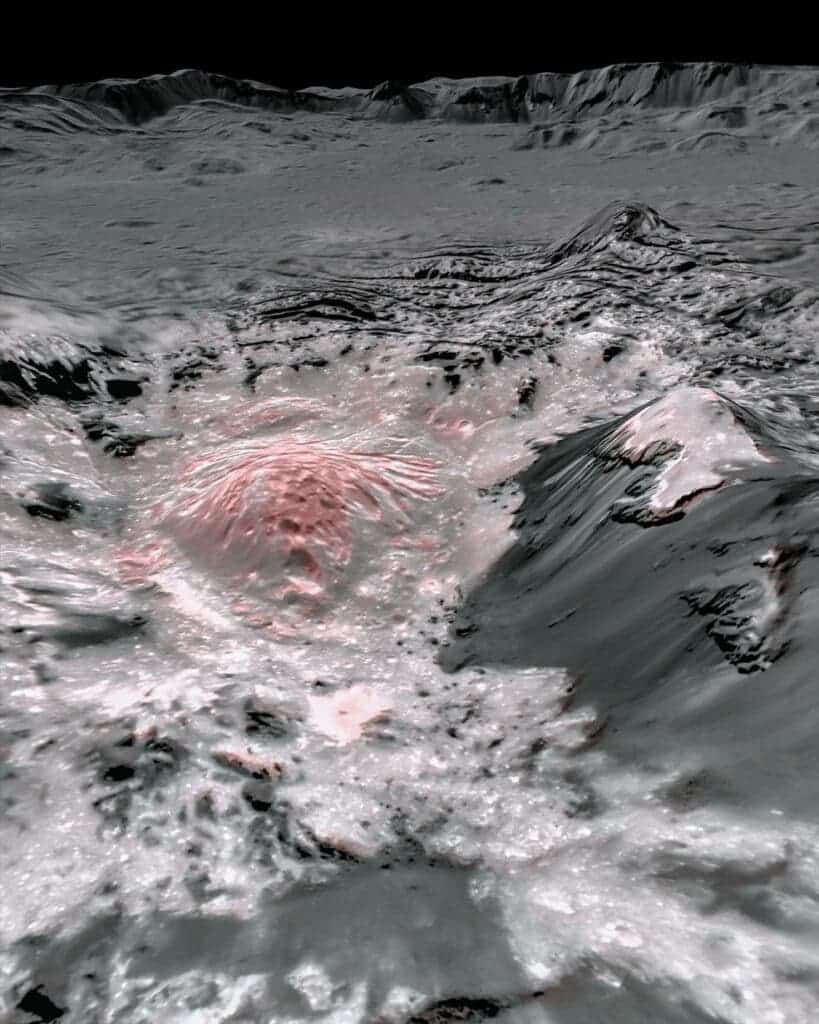
Ceres doesn’t benefit from internal heat generated by the gravitational interactions with a large planet (as is the case for some of Jupiter’s and Saturn’s satellites) yet, nevertheless, Ceres seems to be a water-rich world.
Recent evidence shows that the bright areas previously observed on Ceres were formed through hydrothermal activity that involves salt, which makes the dwarf planet even more tantalizing, as it seems to sport all the required ingredients for life.
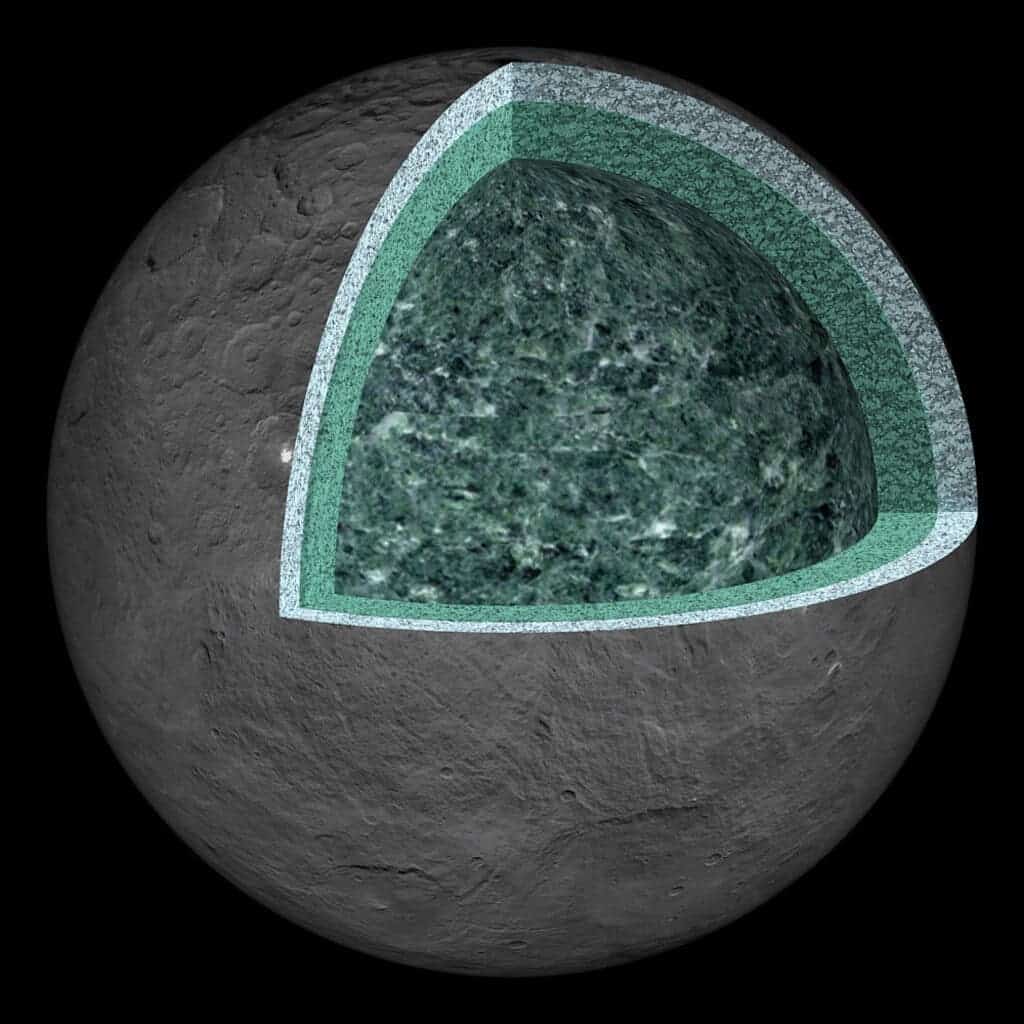
It’s not clear what this means for potential life on Ceres. Water is essential for life as we know it, and NASA regards Ceres as one of the more promising places to host life in our solar system. If Ceresian life exists, it is likely in the form of microbes, similar to bacteria. Even if there’s no life on Ceres anymore, it could still have harbored life in its past ocean. Ceres truly is one of the more interesting places in the solar system.
“More and more, we are learning that Ceres is a complex, dynamic world that may have hosted a lot of liquid water in the past, and may still have some underground,” said Julie Castillo-Rogez, Dawn project scientist and co-author of the studies, based at NASA’s Jet Propulsion Laboratory, Pasadena, California.
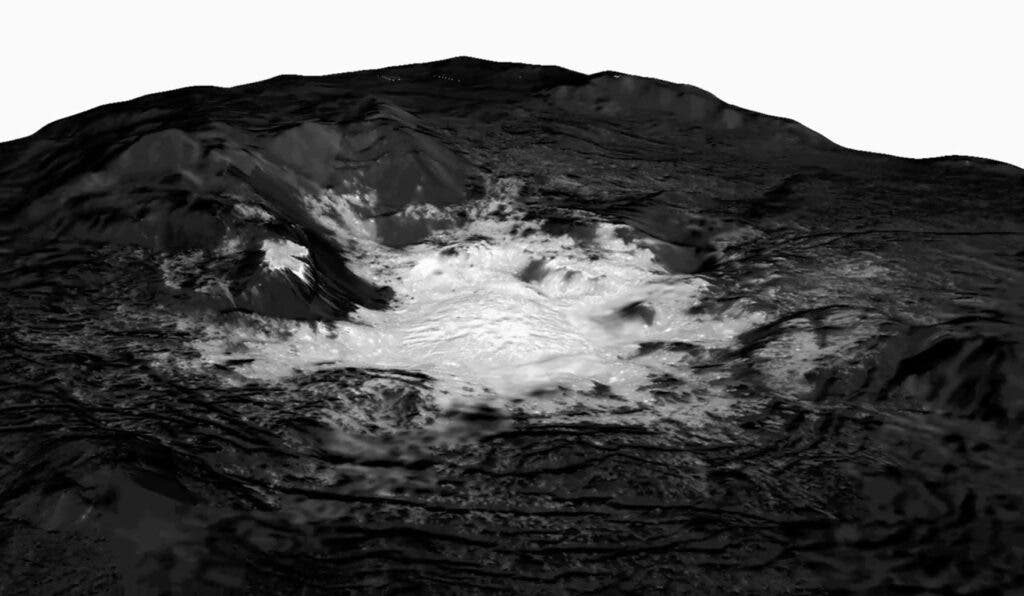
It’s remarkable just how much the Dawn mission has revealed about Ceres. Yet again, we’ve learned that one body which didn’t seem all that interesting harbors plenty of fascinating information. Our solar system is becoming more interesting every year.
“Dawn accomplished far more than we hoped when it embarked on its extraordinary extraterrestrial expedition,” said Mission Director Marc Rayman of NASA’s Jet Propulsion Laboratory in Southern California. “These exciting new discoveries from the end of its long and productive mission are a wonderful tribute to this remarkable interplanetary explorer.”
